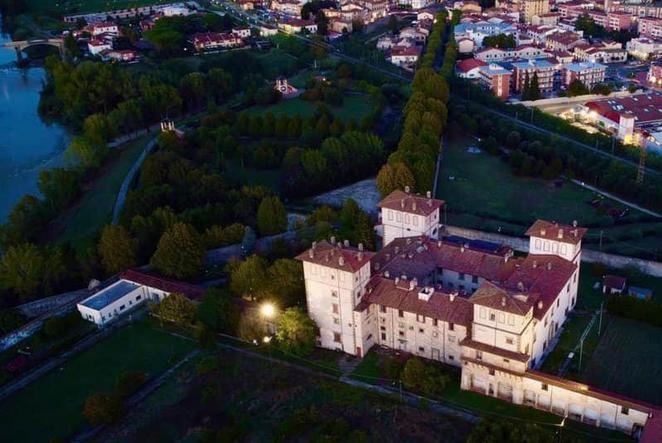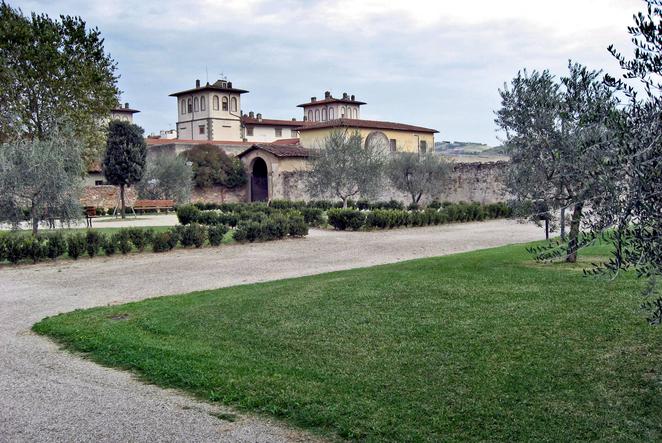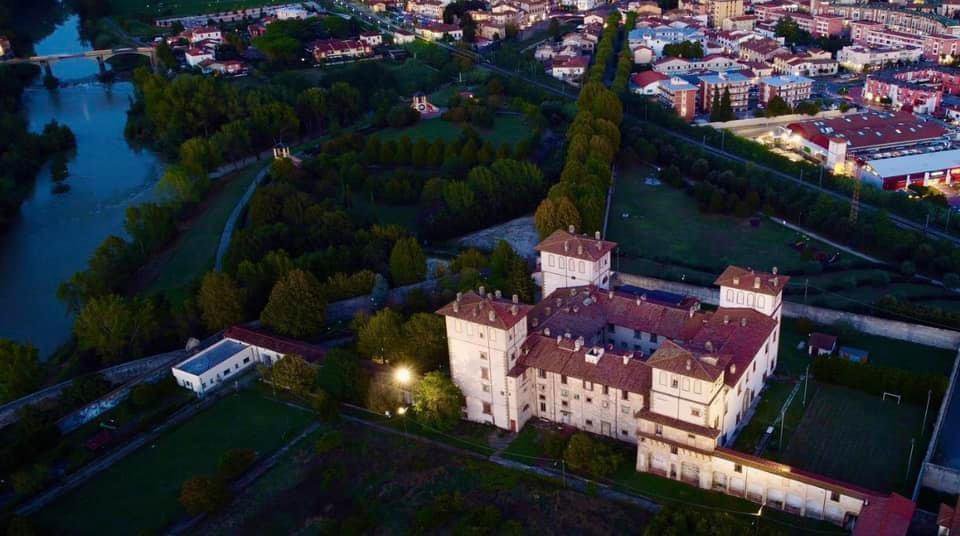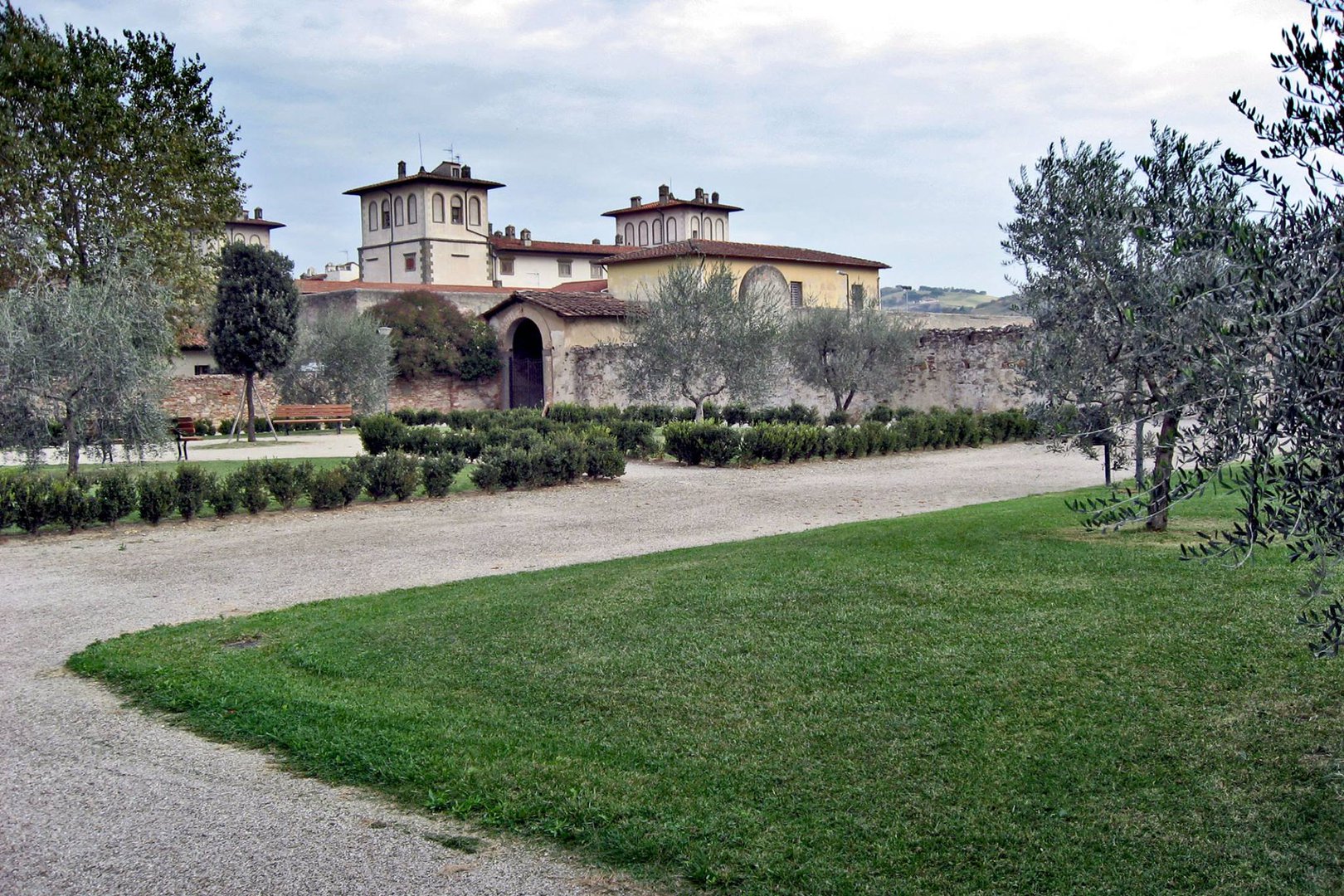The Medici Villa dell'Ambrogiana
The Medici Villa dell’Ambrogiana stands out imposingly on the right bank of the Arno river.
A unique complex, located at the confluence of Arno and Pesa rivers, along the river route that leads from Florence to Livorno, is part of the network of villa-farms owned by the Medici, scattered throughout the Florentine countryside. A place that has peculiarities compared to the other villas: a direct landing on the river that allowed the Medici to reach it by water and a unique cave, decorated in ceramic, with water features, built near what was the ancient landing place.
Originally, like all the other Medici villas, it was a farm and its transformation from farm to villa, with a mighty building with four corner towers, was carried out by the Medici family in the second half of the 16th century. Bernardo Buontalenti presumably had a primary role in this phase of transformation. In the second half of the 17th century, Cosimo III commissioned the architect Ferdinando Tacca to carry out decoration works and to design, on the edge of the Villa, the Church of San Quirico and Lucia and the Convent of San Pietro Alcantara to welcome the Spanish Franciscans. The complex of the Villa joined the convent and the church through a "corridor" that allowed the prince direct access; a path that recalls the most famous "Vasari Corridor". Right under the loggia of the Ambrosian corridor Francesco Redi, "doctor of the Medici" considered the father of experimental biology, made many of his experiments which contributed to increasing the scientific knowledge of the time. Here Cosimo III and Marguerite Louise d'Orléans met for the first time, the latter having made a long journey by carriage and boat from Paris to Montelupo, already married "in absentia". The marriage was very unfortunate as the two came from distant and irreconcilable socio-cultural backgrounds (he was rigidly Catholic, she was worldly and bold). With the transfer of ownership from the Medici to the Lorraine, the Villa was restored by the architect Jean Nicholas Jadot.
After the Napoleonic interlude (1799-1814) the Villa returned to the Lorraine property and Ferdinand III started a series of interventions by the architect Poccianti who, in addition to the recovery project, was the designer of the new stables. The Ambrogiana has always been crucial for the movements of the Medici family and, subsequently, also for the logistics and sorting of correspondence by post. At the time of the Lorraine it was a real "rest station" for traveling by land. With the emergence of rail transport, however, the Villa lost its function and another historical phase of this building began, the effects of which we still suffer today. The stables became a male penitentiary at the end of the 18th century and this decision decreed the abandonment of the residence inside the Villa which, starting in 1850, was converted into a mental hospital and then into a judicial psychiatric hospital. The history of the Villa also includes that of the criminal asylum, a function it held for 130 years, from 1886 to 2017, when the last inmate was also moved elsewhere. Some well-known personalities, such as the anarchists Giovanni Passannante and Pietro Acciarito, also lodged here, from imprisonment until death, both (in different periods) guilty of attacking the life of King Umberto I (a feat that was later carried out by Gaetano Bresci). The tree-lined avenue that leads to the entrance door of the villa was then dedicated to the murdered king.
A process is underway to recover the whole complex and open it to the public again.
Information
Address: Via del Parco, Montelupo Fiorentino
GPX coordinates: 43.7309493,11.0144862



